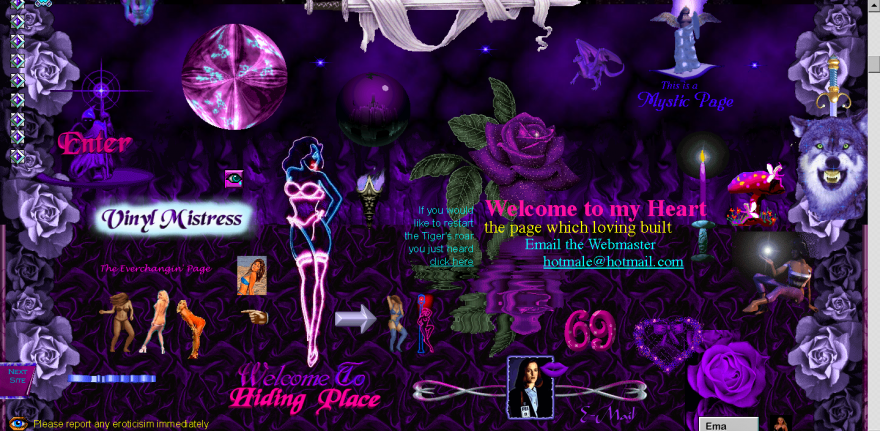It is easy to pine for the old web. The past is in the past, temporally shielded from our attempts to fetishize it and incapable of reaching through the screen to knock some sense into its eulogists. This is how the nostalgia-industrial complex, the one sector that will never take enough of a pause for us to eulogize it, flourishes.

“Cameron’s World,” a project by Cameron Askin and Anthony Hughes, attempts to revive the joys of building a personalized webpage on Geocities in the mid-to-late 90s. The resulting pages are full of overlapping graphics, bright text, animation, and even music. “Cameron’s World” is, in other words, everything that made the old web simultaneously horrible and endearing. “There’s not a whole lot of ‘nice’ (or user-friendly) web design in [old Geocities sites],” Askin conceded in an interview with Motherboard, “but the archives are exploding with creativity.” This trade-off is also present in “Cameron’s World,” which is full of strange ideas and originality but also a violent attack on the eyeballs and mental faculties of its visitors. This is a vision of the web built for communities more than for human beings.
The organizational metaphor of the Geocities-era web was the neighbourhood, a place for like minds to share their views in relative peace. In his Motherboard interview, Askin discusses how he visited these neighbourhoods to find inspiration for “Cameron’s World.” He also notes “users were less critical of websites and creators had a less polished approach. … The tone of voice was a lot more personal.” Insofar as those features are arguably lacking on today’s web, it’s easy to understand why Askin and others would be drawn to the Geocities sites of yore.
One might therefore be tempted to argue that the old Internet was more democratic, a place where anyone could create a site in a safe corner of the digital world without worrying about the vagaries of web development or visual conventions. This sort of web design is, however, exclusionary in its own way. This sort of anarchic web is great for its denizens but inaccessible to those who depend on screen readers for their data or simply struggle with visual clutter. Subsequent visions of the Internet have sought to solve this problem, creating a web that is more structured and inclusive to some previously disenfranchised users, but doing so at a cost to those who enjoyed the anarchic verve that “Cameron’s World” recreates.

The Internet has usually sought to be democratic but has never figured out what democracy means in this context. Much as there are differences between the American, British, and French visions of democracy, there also differences between different conceptions of the democratic Internet. None are inherently more democratic than those that came before, but we often lack the vocabulary to parse these differing democratic visions. This is a discursive challenge that affects the videogame world as much as it does those interested in the future of the web. While all democracies exist to maximize enfranchisement, participation, and representation, there is always the question of what sort of engagement a democracy seeks to maximize and how it intends to achieve such goals. There is no single right answer. “Cameron’s World,” in addition to being a Technicolor trip into the Internet’s past, is a reminder that visions of digital democracy can take on radically different appearances.
